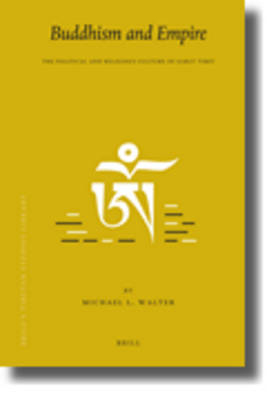
Buddhism and Empire
The Political and Religious Culture of Early Tibet
Seiten
2009
Brill (Verlag)
978-90-04-17584-6 (ISBN)
Brill (Verlag)
978-90-04-17584-6 (ISBN)
This book analyzes the religious-political culture of the Tibetan Empire (c. 620-842) and the establishment of Buddhism, based on early sources. It shows how relationships formed in the Imperial period underlie many of the unique characteristics of traditional Tibetan Buddhism.
This book convincingly reassesses the role of political institutions in the introduction of Buddhism under the Tibetan Empire (c. 620-842), showing how relationships formed in the Imperial period underlie many of the unique characteristics of traditional Tibetan Buddhism. Taking original sources as a point of departure, the author persuasively argues that later sources hitherto used for the history of early Tibetan Buddhism in fact project later ideas backward, thus distorting our view of its enculturation.
Following the pattern of Buddhism’s spread elsewhere in Asia, the early Tibetan imperial court realized how useful normative Buddhist concepts were.
This work clearly shows that, while some beliefs and practices per se changed after the Tibetan Empire, the model of socio-political-religious leadership developed in that earlier period survived its demise and still constitutes a significant element in contemporary Tibetan Buddhist religious culture.
This book convincingly reassesses the role of political institutions in the introduction of Buddhism under the Tibetan Empire (c. 620-842), showing how relationships formed in the Imperial period underlie many of the unique characteristics of traditional Tibetan Buddhism. Taking original sources as a point of departure, the author persuasively argues that later sources hitherto used for the history of early Tibetan Buddhism in fact project later ideas backward, thus distorting our view of its enculturation.
Following the pattern of Buddhism’s spread elsewhere in Asia, the early Tibetan imperial court realized how useful normative Buddhist concepts were.
This work clearly shows that, while some beliefs and practices per se changed after the Tibetan Empire, the model of socio-political-religious leadership developed in that earlier period survived its demise and still constitutes a significant element in contemporary Tibetan Buddhist religious culture.
Michael L. Walter, Ph.D. (1980) in Central Eurasian Studies, Indiana University, is Librarian of the Lumbini International Research Institute (Lumbini, Nepal) and a cataloger at Indiana University Libraries. He has published on Tibetan religion and traditional sciences.
| Erscheint lt. Verlag | 24.6.2009 |
|---|---|
| Reihe/Serie | Brill's Tibetan Studies Library ; 22 |
| Verlagsort | Leiden |
| Sprache | englisch |
| Maße | 155 x 235 mm |
| Gewicht | 725 g |
| Themenwelt | Geisteswissenschaften ► Religion / Theologie ► Buddhismus |
| Geisteswissenschaften ► Religion / Theologie ► Weitere Religionen | |
| ISBN-10 | 90-04-17584-9 / 9004175849 |
| ISBN-13 | 978-90-04-17584-6 / 9789004175846 |
| Zustand | Neuware |
| Haben Sie eine Frage zum Produkt? |
Mehr entdecken
aus dem Bereich
aus dem Bereich
Philosophische Betrachtungen
Buch | Softcover (2024)
Aufbau TB (Verlag)
CHF 20,95
Unterweisungen in Zen-Meditation
Buch | Hardcover (2024)
Arkana (Verlag)
CHF 29,90


